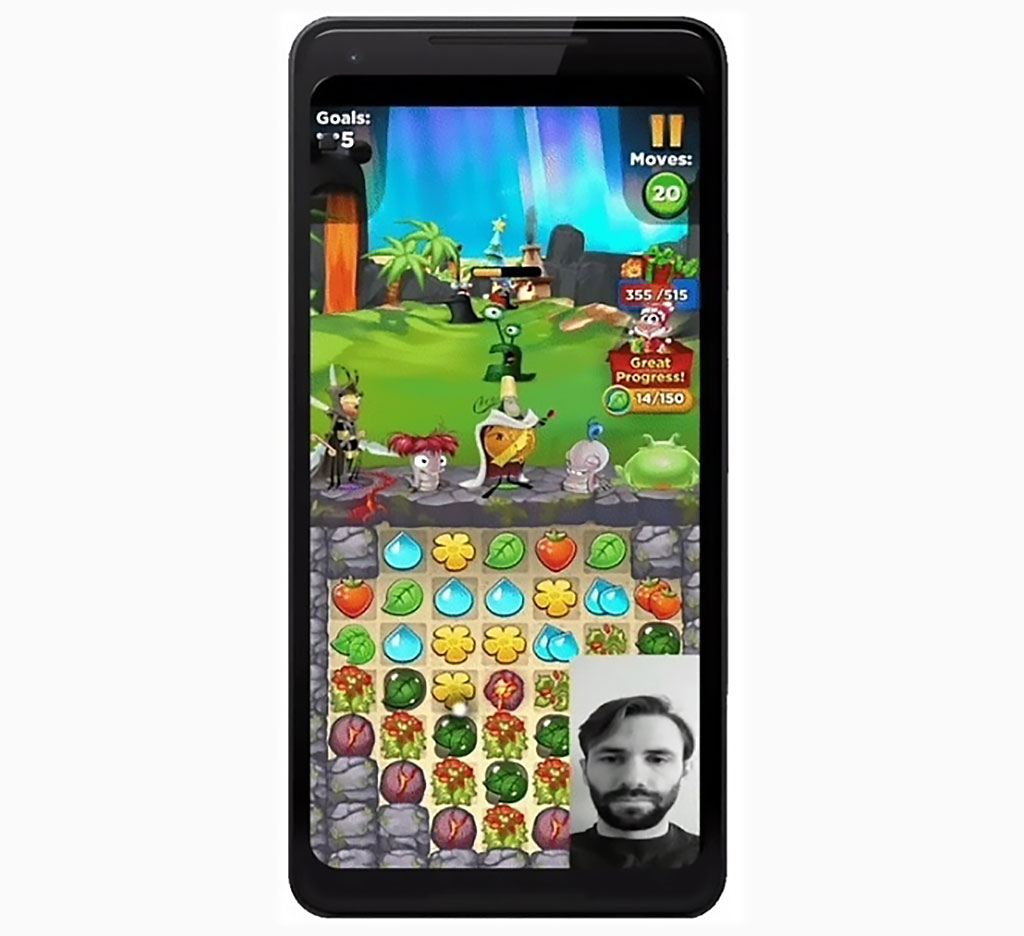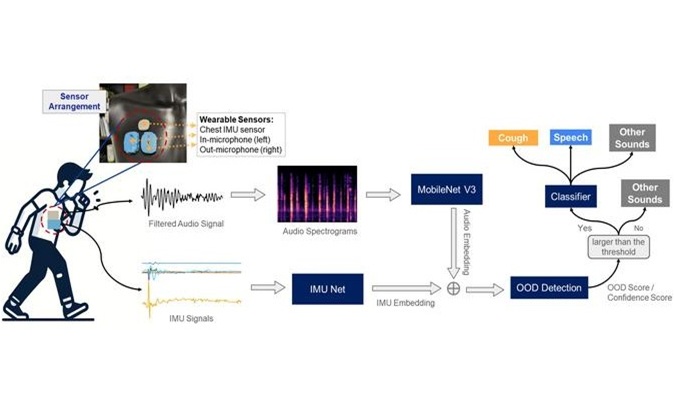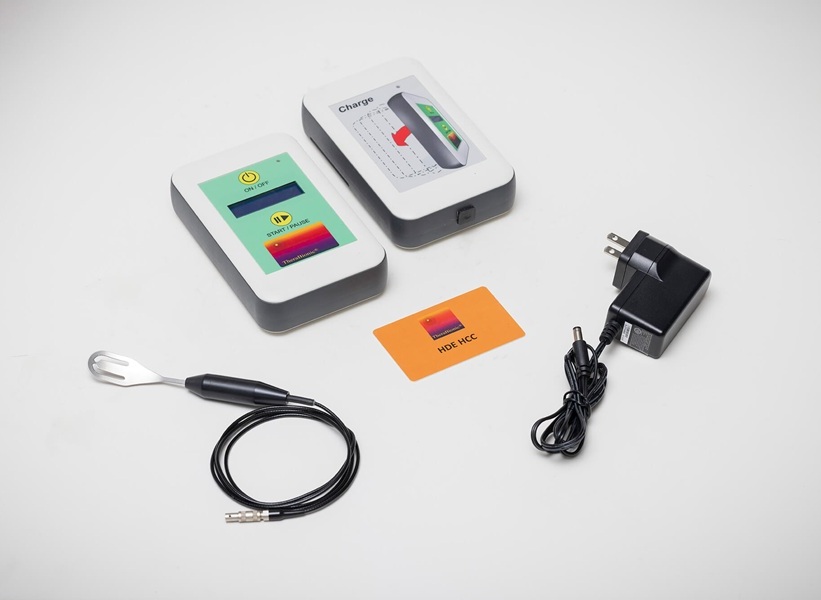Accessibility App Helps Parplegics Control Android Devices
|
By HospiMedica International staff writers Posted on 20 Jan 2020 |

Image: An accessibility app helps the disable control their phone with facial gestures (Photo courtesy of Swiftable)
A touch-free app aids amyotrophic lateral sclerosis (ALS) or spinal cord injury patients control their android devices using just head movement and facial gestures.
The Swiftable (Arvada, CO, USA) Jabberwocky touch-free accessibility app is designed to enable users with limited mobility to use their device without physically touching it. Users can perform taps and complex real-time swipe gestures by just moving their head; the android device’s front-facing camera, using Google (Mountain View, CA, USA) augmented reality (AR) technology, tracks head movement and displays a cursor that shows where the user’s nose is pointing to on the screen.
To call up a cursor, the user blinks once. When quickly opening and closing the mouth, a virtual tap is performed at the location of the cursor. To swipe or perform complex real-time gestures, the user opens their mouth and drags the cursor across the screen with head movements, and then closes their mouth. The Jabberwocky accessibility service can thus provide access to email, games, internet, video, and all existing Android apps. The Jabberwocky touch-free accessibility app is available on the Google Play Store by searching for the keyword “Jabberwocky”.
“Our mission is to enable independence by unlocking devices that were previously inaccessible to users with ALS, spinal cord injury, or other motor impairments,” said Aaron Chavez, CEO of Swiftable. “We strive to make it as intuitive, effortless, and, dare I say, fun, as the traditional way of using a device.”
“As my dad’s ALS got worse, he lost the hand control needed to use his computer and mobile devices. When we found out about the Jabberwocky app that is controlled by head movement, for the first time in months he was able to check his emails and read the news,” said app user Matthew Smitherman. “The smile on his face when he was able to do those things again for himself was amazing. I can’t thank the people at Jabberwocky enough for giving him back a bit of control over his life.”
Related Links:
Swiftable
Google
The Swiftable (Arvada, CO, USA) Jabberwocky touch-free accessibility app is designed to enable users with limited mobility to use their device without physically touching it. Users can perform taps and complex real-time swipe gestures by just moving their head; the android device’s front-facing camera, using Google (Mountain View, CA, USA) augmented reality (AR) technology, tracks head movement and displays a cursor that shows where the user’s nose is pointing to on the screen.
To call up a cursor, the user blinks once. When quickly opening and closing the mouth, a virtual tap is performed at the location of the cursor. To swipe or perform complex real-time gestures, the user opens their mouth and drags the cursor across the screen with head movements, and then closes their mouth. The Jabberwocky accessibility service can thus provide access to email, games, internet, video, and all existing Android apps. The Jabberwocky touch-free accessibility app is available on the Google Play Store by searching for the keyword “Jabberwocky”.
“Our mission is to enable independence by unlocking devices that were previously inaccessible to users with ALS, spinal cord injury, or other motor impairments,” said Aaron Chavez, CEO of Swiftable. “We strive to make it as intuitive, effortless, and, dare I say, fun, as the traditional way of using a device.”
“As my dad’s ALS got worse, he lost the hand control needed to use his computer and mobile devices. When we found out about the Jabberwocky app that is controlled by head movement, for the first time in months he was able to check his emails and read the news,” said app user Matthew Smitherman. “The smile on his face when he was able to do those things again for himself was amazing. I can’t thank the people at Jabberwocky enough for giving him back a bit of control over his life.”
Related Links:
Swiftable
Latest Patient Care News
- Revolutionary Automatic IV-Line Flushing Device to Enhance Infusion Care
- VR Training Tool Combats Contamination of Portable Medical Equipment
- Portable Biosensor Platform to Reduce Hospital-Acquired Infections
- First-Of-Its-Kind Portable Germicidal Light Technology Disinfects High-Touch Clinical Surfaces in Seconds
- Surgical Capacity Optimization Solution Helps Hospitals Boost OR Utilization

- Game-Changing Innovation in Surgical Instrument Sterilization Significantly Improves OR Throughput
- Next Gen ICU Bed to Help Address Complex Critical Care Needs
- Groundbreaking AI-Powered UV-C Disinfection Technology Redefines Infection Control Landscape
- Clean Hospitals Can Reduce Antibiotic Resistance, Save Lives
- Smart Hospital Beds Improve Accuracy of Medical Diagnosis
- New Fast Endoscope Drying System Improves Productivity and Traceability
- World’s First Automated Endoscope Cleaner Fights Antimicrobial Resistance
- Portable High-Capacity Digital Stretcher Scales Provide Precision Weighing for Patients in ER
- Portable Clinical Scale with Remote Indicator Allows for Flexible Patient Weighing Use
- Innovative and Highly Customizable Medical Carts Offer Unlimited Configuration Possibilities
- Biomolecular Wound Healing Film Adheres to Sensitive Tissue and Releases Active Ingredients
Channels
Critical Care
view channel
Origami Robots to Deliver Medicine Less Invasively and More Effectively
Delivering medicine to ulcers or other internal sites often requires invasive procedures that can disrupt surrounding tissues and lengthen recovery times. Traditional magnetic actuators used in soft robotics... Read more
Improved Cough-Detection Technology Aids Health Monitoring
Coughing serves as an important biomarker for tracking a variety of conditions and can help monitor the progress of respiratory diseases or predict when someone’s asthma is being exacerbated.... Read moreSurgical Techniques
view channel
Novel Glue Prevents Complications After Breast Cancer Surgery
Seroma and prolonged lymphorrhea are among the most common complications following axillary lymphadenectomy in breast cancer patients. These postoperative issues can delay recovery and postpone the start... Read more
Breakthrough Brain Implant Enables Safer and More Precise Drug Delivery
Delivering medication directly to specific regions of the brain has long been a major challenge in treating neurological disorders. Current implants and infusion systems typically reach only one or two... Read moreHealth IT
view channel
Printable Molecule-Selective Nanoparticles Enable Mass Production of Wearable Biosensors
The future of medicine is likely to focus on the personalization of healthcare—understanding exactly what an individual requires and delivering the appropriate combination of nutrients, metabolites, and... Read moreBusiness
view channel
Philips and Masimo Partner to Advance Patient Monitoring Measurement Technologies
Royal Philips (Amsterdam, Netherlands) and Masimo (Irvine, California, USA) have renewed their multi-year strategic collaboration, combining Philips’ expertise in patient monitoring with Masimo’s noninvasive... Read more
B. Braun Acquires Digital Microsurgery Company True Digital Surgery
The high-end microsurgery market in neurosurgery, spine, and ENT is undergoing a significant transformation. Traditional analog microscopes are giving way to digital exoscopes, which provide improved visualization,... Read more
CMEF 2025 to Promote Holistic and High-Quality Development of Medical and Health Industry
The 92nd China International Medical Equipment Fair (CMEF 2025) Autumn Exhibition is scheduled to be held from September 26 to 29 at the China Import and Export Fair Complex (Canton Fair Complex) in Guangzhou.... Read more
















